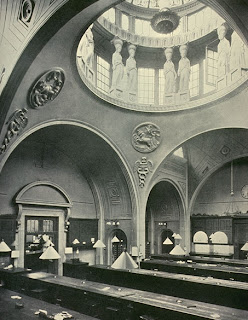The Bank Of England
The bank was designed and constructed because the English economy was in a state of crisis in the early 19th century. At this time the country had to borrow often and in large amounts from foreign banks. Due to this a Bank of England was much needed to be built and very important.
- it was located in London, England
- commission of building went to John Soane
- he was influenced by Giambattista Piranesi
- in 1791 he began receiving large commissions when appointed to the Office of the Works
- neoclassicism had not risen at that time even though it was favored
- Bank Stock Office was designed from 1791-1793
- this was the first part of the bank to be built
- the designer Soane invented an architectural language
- this was based on pendentives and flat vaults
- the interior seems papery and light
- has small passages contrasting with larger spaces
- picturesque form of classicism
- deals with classical forms in a quirky and arbitrary way
- championed as proto-postmodern
- avoided use of Greek and Roman ornaments
- uses segmental and semicircular arches
- Soane believed in the tragic nobility of architecture
- this bank was represented as a finished building and as a ruin
- it anticipated the view backward from some future age
The above images show first the exterior front view of the building looking directly at it. The second picture shows the interior of the bank showing the features of the inside as well as the details of the ceiling and wall structures. The last shows the plan view of the bank.




annotations are far more than one line descriptions/captions. in all of this, your voice and your opinion does not shine through.
ReplyDelete